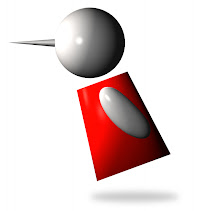Teachers who have their own classroom need to avoid the traditional classroom layout, i.e. straight rows of desks facing towards the white-board/chalk-board. Such classrooms are boring and, often, make teaching and learning less effective. A classroom needs to be dynamic, it needs to accommodate each lesson and facilitate different methods of teaching. Let's take group work as an example. Traditional classroom layouts were designed in a way to avoid interaction between students. However we are now aware of the importance of peer-tutoring. Education is all about communication and the classroom needs to allow this to happen. Arranging small 'islands' of desks is a very effective way of encouraging group work in the classroom. the best way of doing this is to arrange four desks facing each other. Arrange them in a way so that students can still see the board. Such classroom layouts will also allow you to move freely between desks. You cannot allow yourself to stand in just one area of the classroom. Moving around will allow you to interact better with the students and to easily supervise their work. You need to experiment with different layouts and don't be afraid to ask the students for feedback. Involving students in such decisions will allow for a better understanding between you and your learners.
For elementary teachers, it is a good idea to divide the class in different areas. For example, the 'Science Area' will include a small exhibition of materials used in previous lessons or a display of the students' own work. The "Reading Area" will allow students to spend some quite time reading, make this area as comfortable as possible, throw some cushions or small recliners. Make students understand that reading can be a fun way to relax. The reading area may also be used by students who have finished class assignments earlier than their peers.




No comments:
Post a Comment